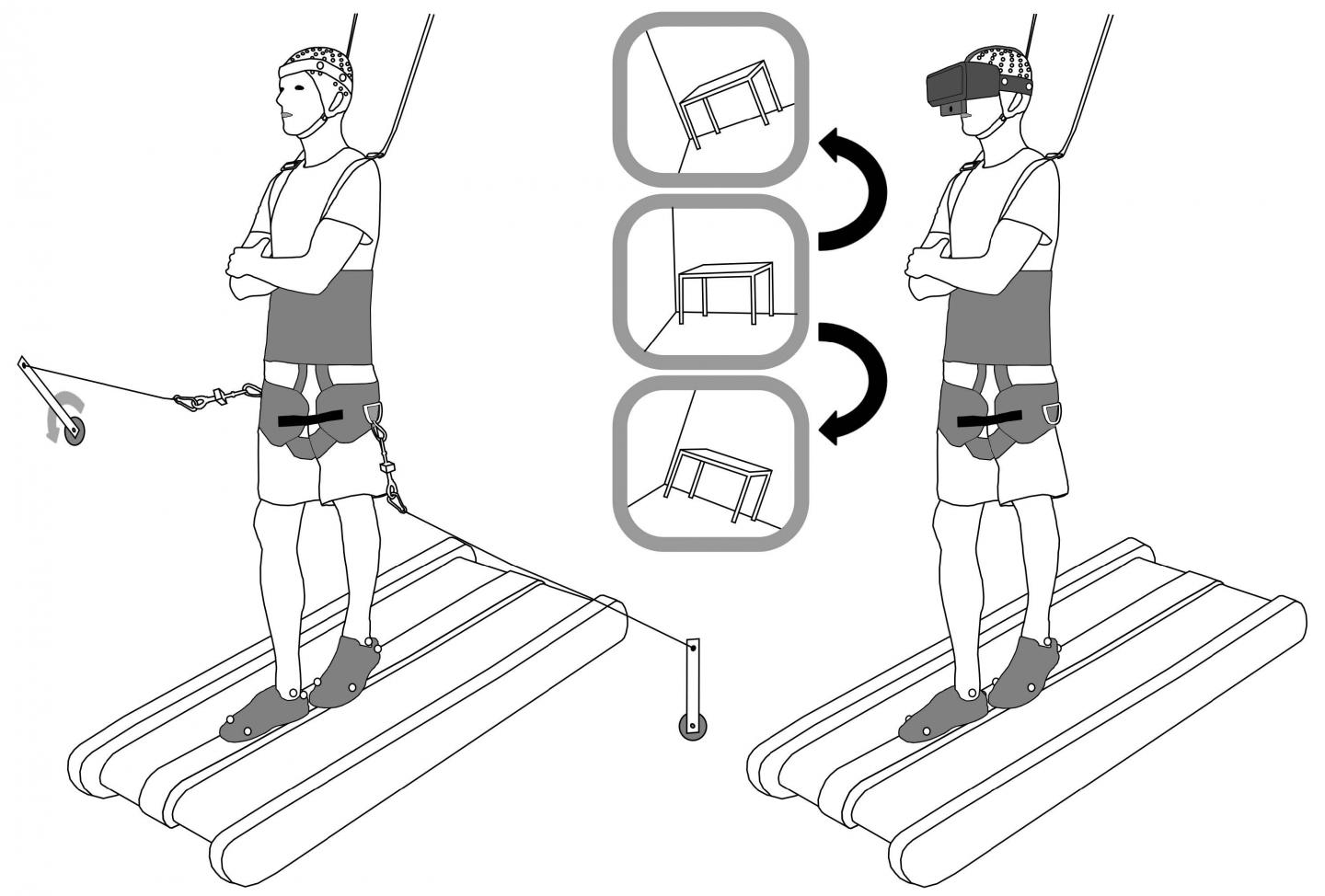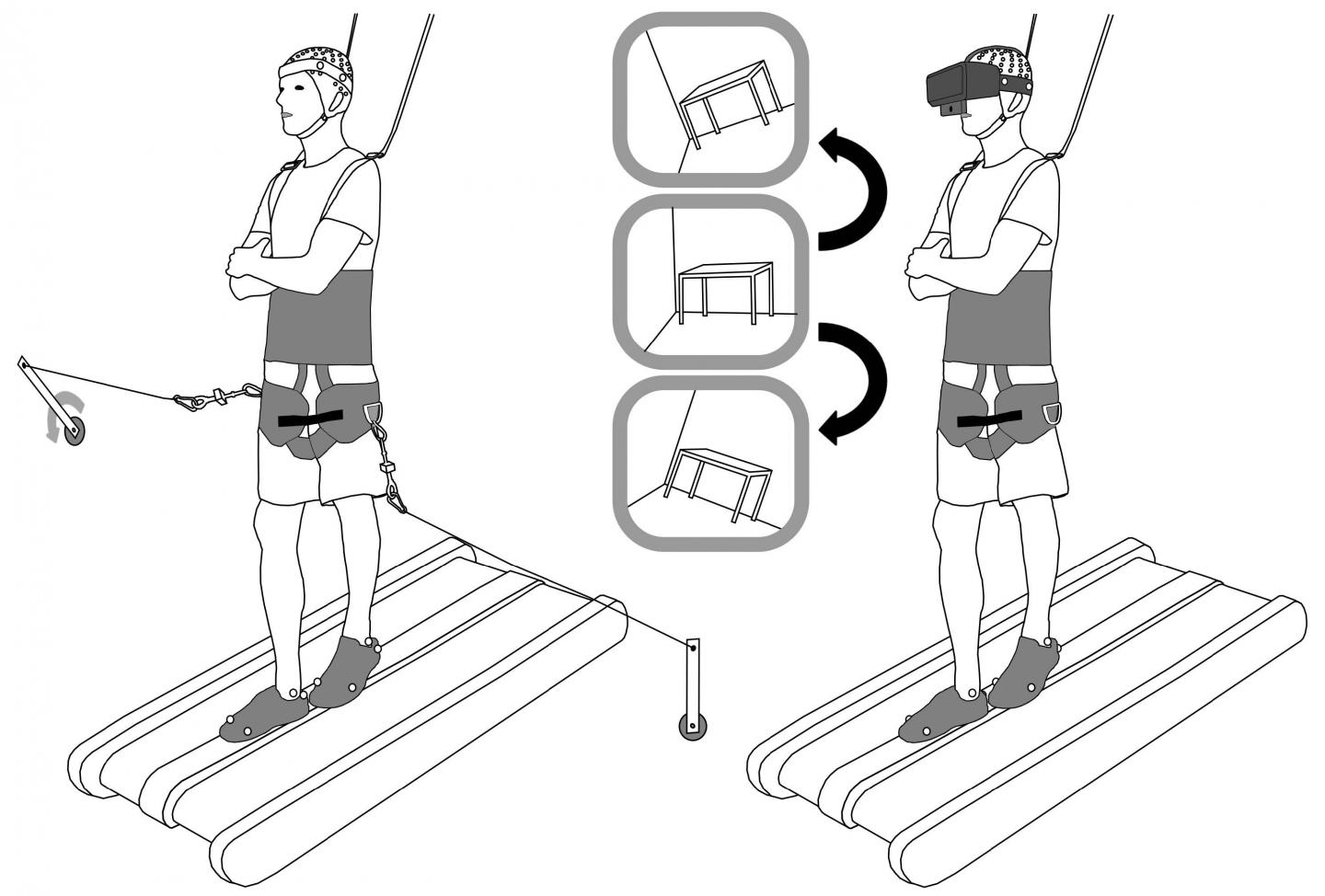
Credit: Peterson & Ferris, eNeuro (2018)
A study of young adults published in eNeuro demonstrates how the brain responds to disruptions in the body's balance. The research identifies a pattern of electrical activity that could be used to assess balance in patients with movement disorders such as Parkinson's disease.
Regaining balance after the body is acted on by external forces is a complex process that requires integration of the senses and muscles to remain upright. Older adults, in particular, rely on their vision to maintain balance, which can lead to falls as visual acuity declines with age.
Steven Peterson and Daniel Ferris used electroencephalography (EEG) and electromyography (EMG) to record electrical activity from the brain and muscles as participants walked or stood in place on a narrow beam mounted to a treadmill. The participants' balance was challenged by either pulling them from side to side or distorting their visual field with a virtual reality headset. The researchers found that these balance disruptions elicited similar electrical responses in different parts of the brain, suggesting a common signature of balance maintenance in the healthy brain. Training programs to improve balance in older adults or individuals with lower limb amputations should therefore keep in mind these underlying brain differences.
###
Article: Differentiation in theta and beta electrocortical activity between visual and physical perturbations to walking and standing balance
DOI: https://doi.org/10.1523/ENEURO.0207-18.2018
Corresponding author: Steven Peterson (University of Michigan, Ann Arbor, USA), [email protected]
About eNeuro
eNeuro, the Society for Neuroscience's open-access journal launched in 2014, publishes rigorous neuroscience research with double-blind peer review that masks the identity of both the authors and reviewers, minimizing the potential for implicit biases. eNeuro is distinguished by a broader scope and balanced perspective achieved by publishing negative results, failure to replicate or replication studies. New research, computational neuroscience, theories and methods are also published.
About The Society for Neuroscience
The Society for Neuroscience is the world's largest organization of scientists and physicians devoted to understanding the brain and nervous system. The nonprofit organization, founded in 1969, now has nearly 37,000 members in more than 90 countries and over 130 chapters worldwide.
Media Contact
David Barnstone
[email protected]
202-962-4000
@SfNJournals
http://www.sfn.org
Related Journal Article
http://dx.doi.org/10.1523/ENEURO.0207-18.2018





